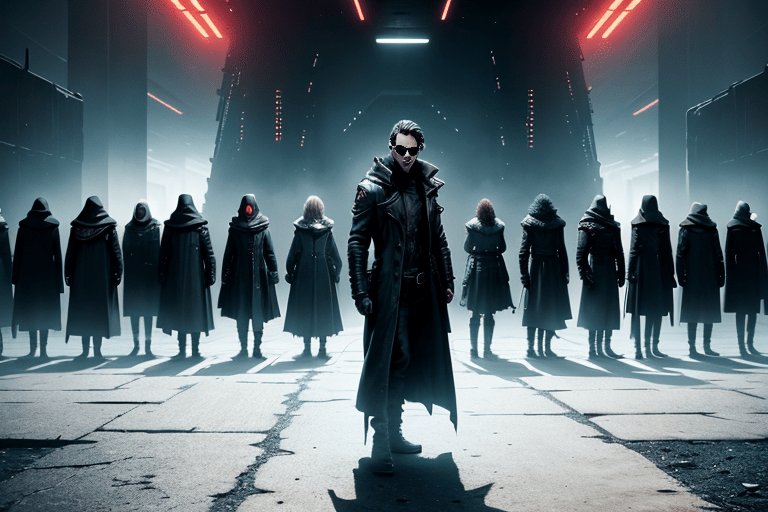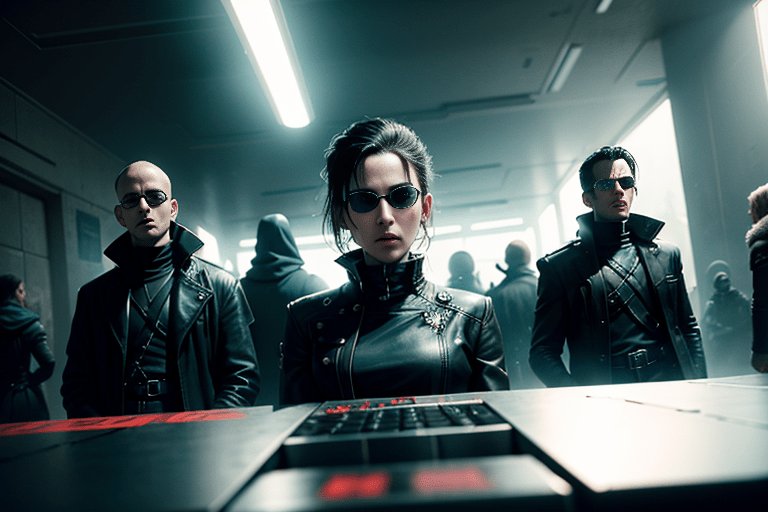Cyberpunk Classic: The Matrix’s Rebellion and Reality

Directed by the Wachowskis, “The Matrix” is a legendary film that has become synonymous with the cyberpunk genre. Released in 1999, the movie paints a haunting picture of a dystopian future where machines have enslaved humanity within a simulated reality known as the Matrix. Through the use of cyberpunk elements, the film creates a dark, gritty, and futuristic world that explores themes of power, control, and rebellion, leaving an indelible mark on the sci-fi genre.
One of the defining characteristics of the cyberpunk genre is its portrayal of a dystopian future where society has been transformed by advanced technology. “The Matrix” is no exception, depicting a world where machines have taken over and humans have been reduced to a life of servitude. The film’s opening scenes set the tone for this bleak future, with a desolate, post-apocalyptic landscape that contrasts sharply with the neon-lit, high-tech world of the Matrix.

Another key element of the cyberpunk genre is its focus on rebellion and resistance against oppressive power structures. In “The Matrix,” this takes the form of a group of hackers and rebels who have rejected the false reality of the Matrix and are fighting to free humanity from its grasp. Led by the enigmatic Morpheus, this group serves as a symbol of hope in a world that has been overrun by machines.
One of the most striking visual elements of “The Matrix” is its use of technology to create a virtual reality that is indistinguishable from the real world. This concept, known as the “Matrix,” allows the machines to control human beings by giving them the illusion of freedom while keeping them trapped in a cycle of servitude. The film’s use of special effects, particularly its depiction of slow-motion action sequences, was groundbreaking at the time and helped to create a sense of otherworldly reality.

In addition to its cyberpunk elements, “The Matrix” also draws on a number of other influences, including philosophy, mythology, and religious symbolism. The film’s central concept of the Matrix is based on the ancient philosophical idea of the “Allegory of the Cave,” in which individuals are trapped in a world of illusion and must be freed to see the truth. Meanwhile, the character of Neo (played by Keanu Reeves) serves as a Christ-like figure, sacrificing himself to save humanity from the machines.
Despite its success, “The Matrix” was not without controversy. Some critics accused the film of being overly violent and nihilistic, while others saw it as a critique of the increasing role of technology in modern society. Nevertheless, the film’s impact on popular culture cannot be denied, inspiring countless imitators and cementing its place as a classic of the cyberpunk genre.
“The Matrix” is a landmark film that represents the cyberpunk genre at its best. With its stunning visuals, complex themes, and memorable characters, it has become a cultural touchstone that continues to inspire and influence filmmakers today. If you haven’t seen it yet, do yourself a favor and experience this groundbreaking film for yourself.







